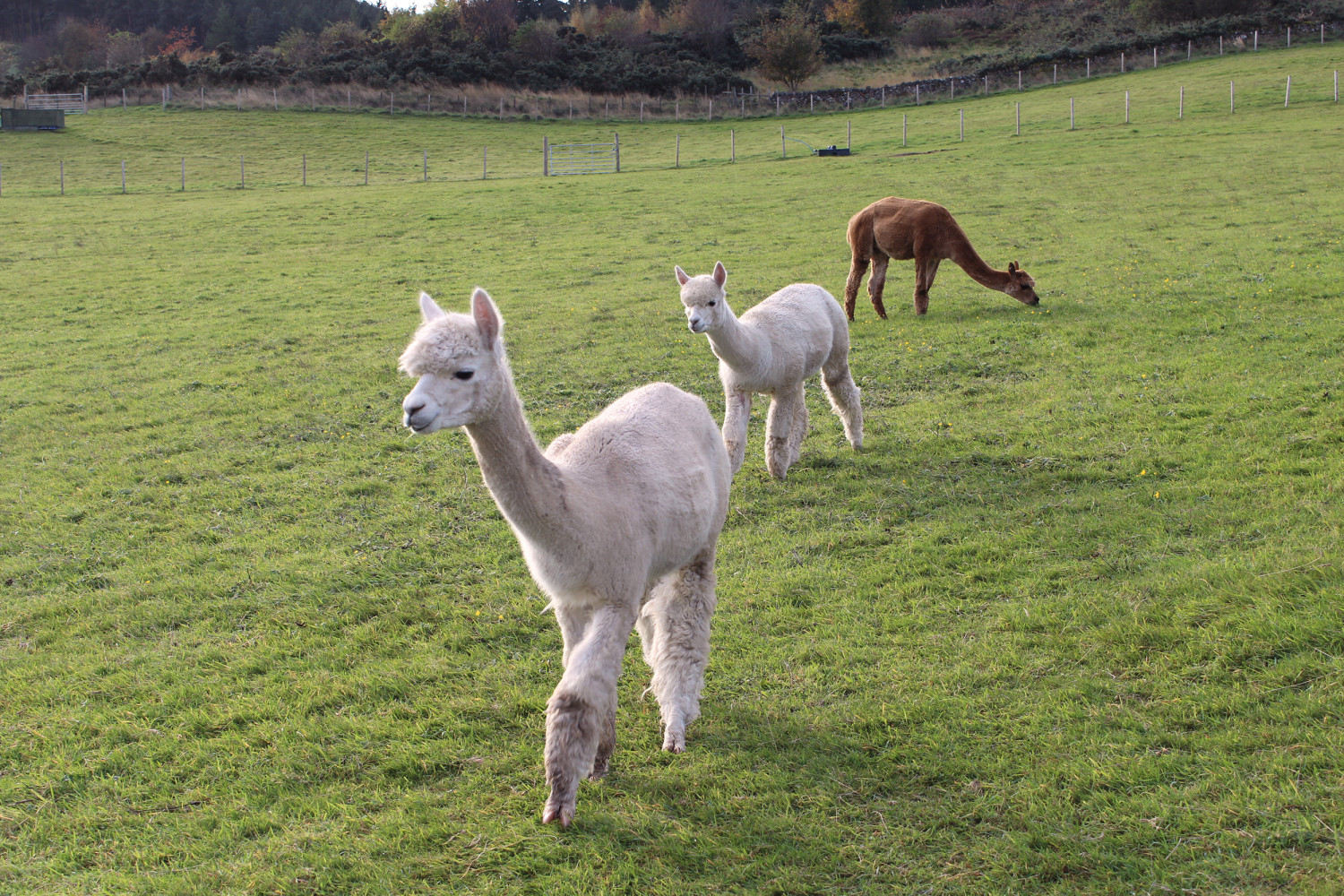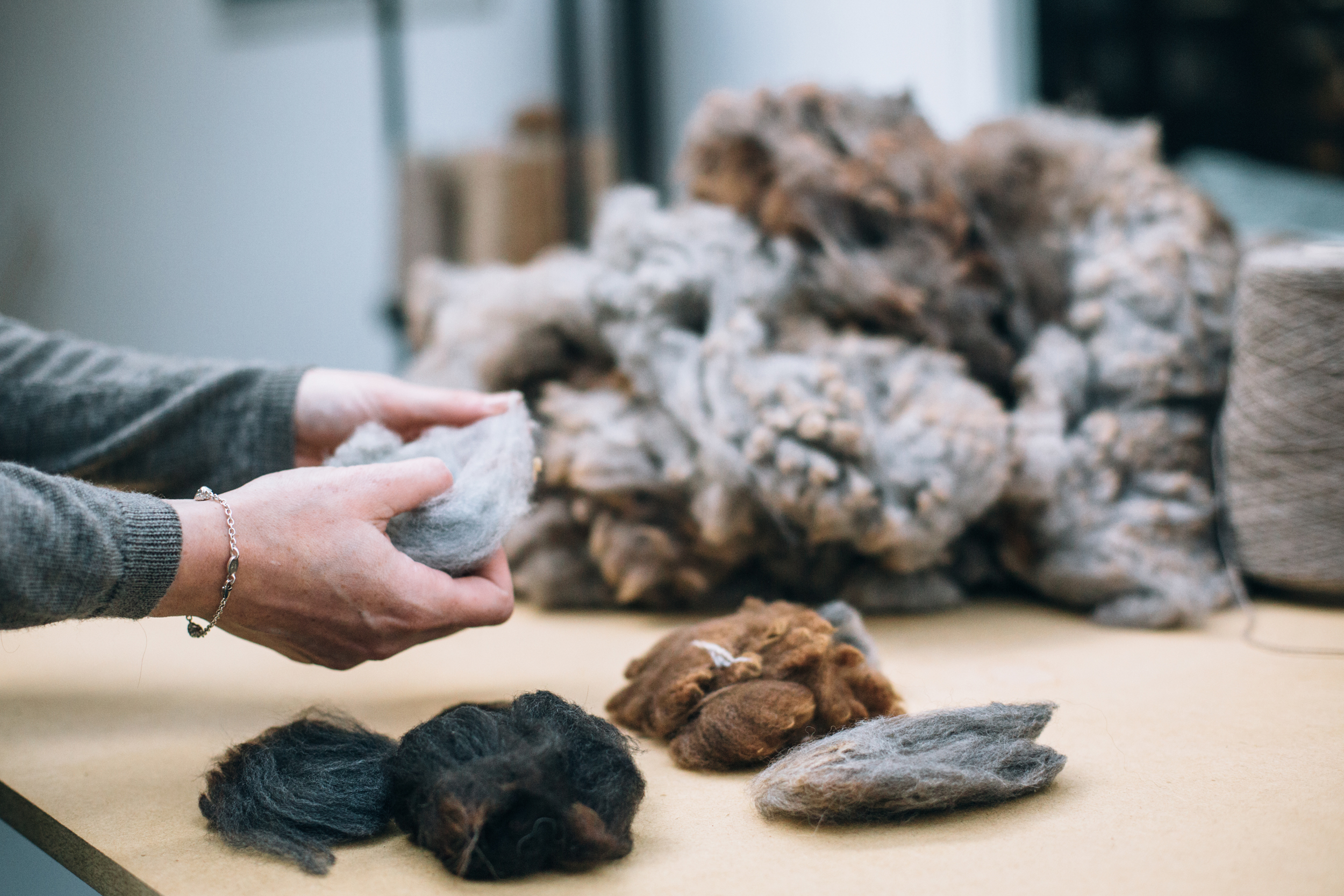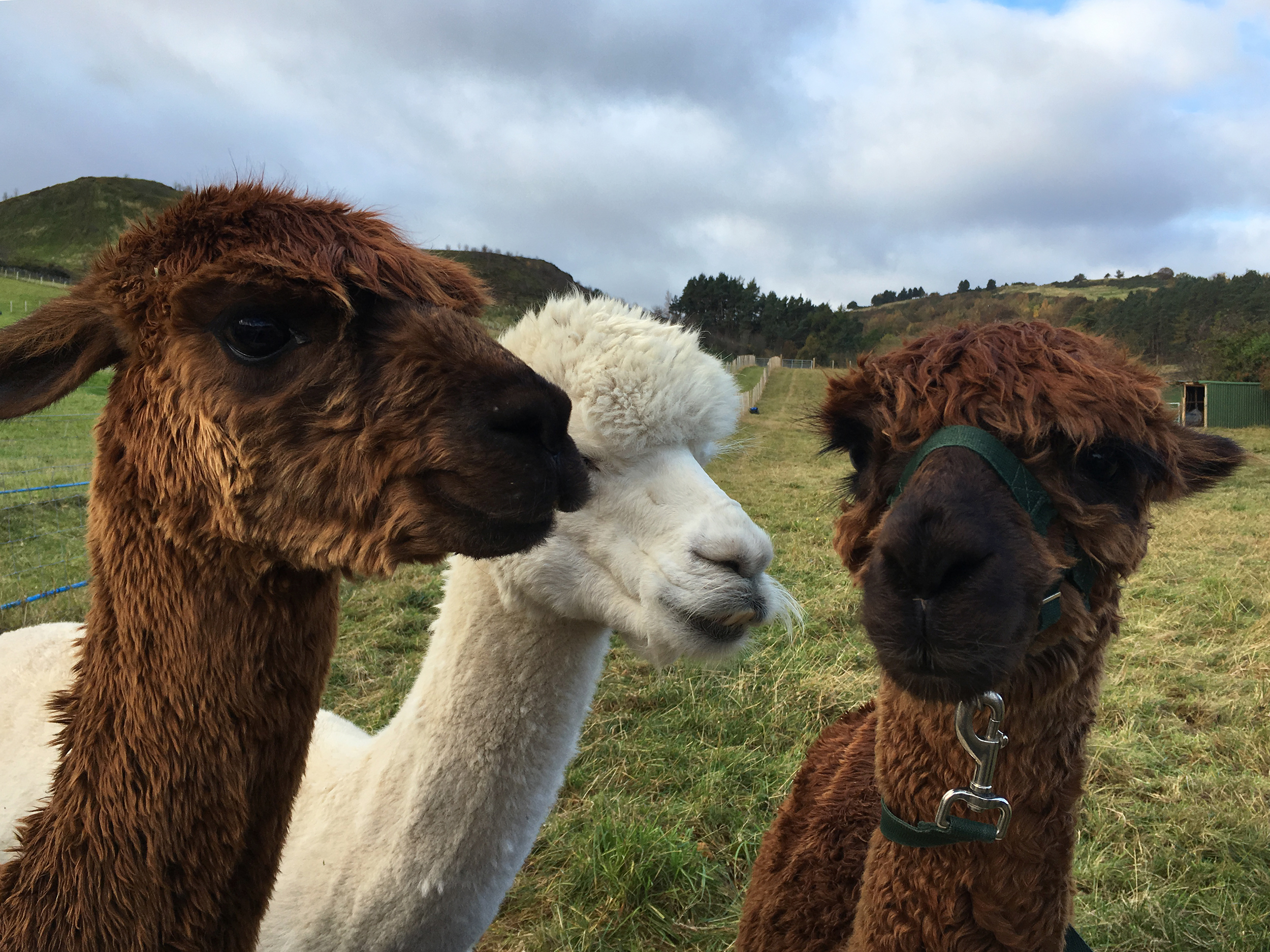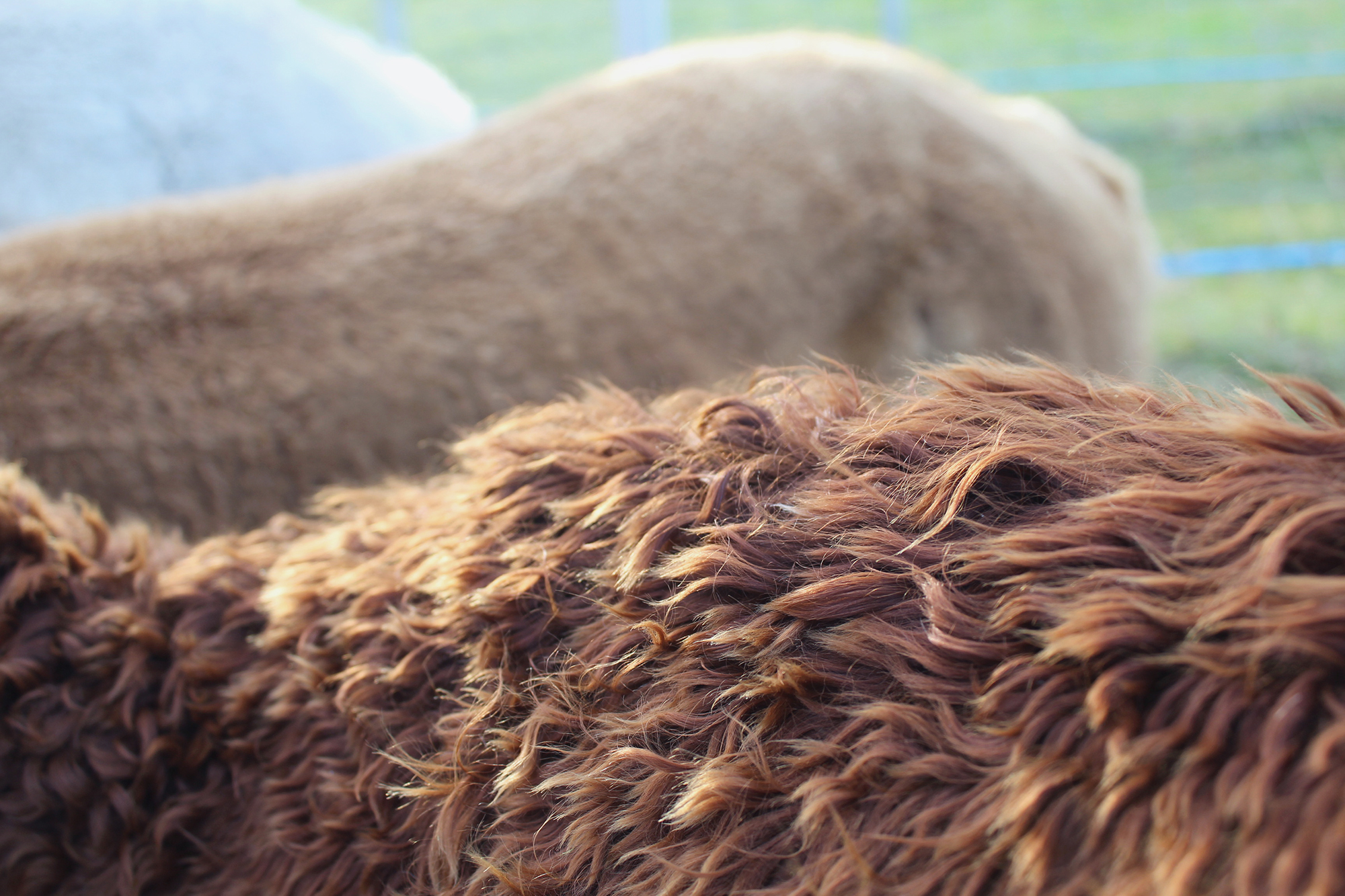03 Jan 2019
All of the fleece used in our Signature and Minta Collections is sourced from alpaca farms here in the UK. This wonderful material is both sustainable and luxurious and has a long list of other qualities that make it a truly special fibre.

Alpaca fibre is the only luxury fibre that can be grown here in Britain, making it the perfect sustainable luxury material to use in our Signature and Minta Collections.
Although originally from Peru, there is a growing population of around 35,000 alpacas in Britain. Distributed across small farms throughout Scotland, England and Wales, these animals are raised by breeders and passionate alpaca enthusiasts and are often treated more like pets than livestock.

Checking the crimp and length of staple of an alpaca fleece.
We work with these small-scale producers to ethically source the raw alpaca fleece for our products. A happy alpaca produces the strongest and most lustrous fleece, and we want to know that the animals involved in making our products have been well looked after. Sourcing from within the UK means we have built relationships with the breeders we buy from, and can identify the farm and sometimes even the name of the alpaca that a fleece came from.
Although most alpaca wool initially feels soft, there is a large variation between good quality and bad quality alpaca fibre. Only the finest alpaca fleece is spun into yarn for our products, which makes such a difference to the luxurious finish and handle of a piece.
When selecting our fleece we look for a combination of qualities. Firstly the length of staple (fibre length) as this has a huge effect on the spinning process, as well as a low micron count (rating of how fine or coarse a fibre is). Then we consider the crimp, (natural curl) lustre (shine), and the quality of its natural colour.

Some of the amazing natural colours produced by the alpacas.
Alpacas grow fleece in 5 main natural colours: white, fawn, grey, brown and black, however combinations of these often occur within the same fleece, giving rise to 22 officially recognised colours. Within these 22 colours there is still even more variation as each alpaca will produce a subtly different shade, sometimes changing with their different life stages or diet! The fibres used in our Signature and Minta collections are un-dyed, celebrating the amazing depth and range of natural colour available in alpaca wool.
Alpaca fleece is know as a ‘dry fibre’ as alpacas do not produce any lanolin or animal grease in their wool. This means that it can be worn by people who are usually allergic to wool, as it is commonly the lanolin in sheep’s wool that irritates the skin. This also makes the production of alpaca items more environmentally friendly as they do not need harsh scouring to remove residual oils in the fibre.

Alpaca is one of the warmest natural fibres in the world and is 30% more insulating than merino. This is due to it’s hollow structure, which traps air and keeps you cosy without feeling hot or heavy. It is also great at wicking away moisture to help maintain an even temperature.
Alpacas are a species of South American camelid that were domesticated by the ancient Incas over 6,000 years ago. Closely related to lamas, alpacas were bred to produce soft fleeces wheras lamas were bred to help with carrying supplies.

Three alpacas named Caspar, Calvin and Balthazar
Aside from the amazing qualities of their fleece, Alpacas themselves are very endearing animals. They each have very distinct personalities and are given names by their breeders. We love hearing that a particular fleece came from an alpaca called Armani or Bathsheba and can only begin to imagine the unique personality of the alpaca it belongs to!
Alpacas are sheared once a year between April and June, to remove their warm fleece in time for the summer months. If you want to see more of the shearing process check out our blog post; an alpaca farm on shearing day.

A Suri alpaca (front) has a silky fleece and Huyacaya alpaca (behind) has a fluffy looking fleece.
Although most people don’t realise, there are actually two types of alpaca: Suri and Huacaya.
Huacaya are the more common, fluffy-looking alpacas. The Huacaya alpaca is sheared once a year, producing on average 2-4kg of fibre, with some exceptional animals producing as much as 5-7 kg.
Only about 5% of alpacas in the UK and worldwide are Suri, and their fleece is of a finer, silk like quality. The Suri is a slower growing fibre with the animals being sheared every 2 years, the fibre is much heavier and one animal can produce on average 4-8kg per fleece.

An alpaca mother with her baby
Female alpacas are known as ‘dams’ and their babies are ‘cria’. They have one of the longest gestation periods for a mammal of their size: 11 – 12 months! If there is danger or the mother is under stress they are even able to suspend giving birth until the situation is safe.
We hope you have enjoyed learning a little about the fascinating creatures, if you would like to find out more we recommend cehcking out the website of the British Alpaca Society.
"*" indicates required fields